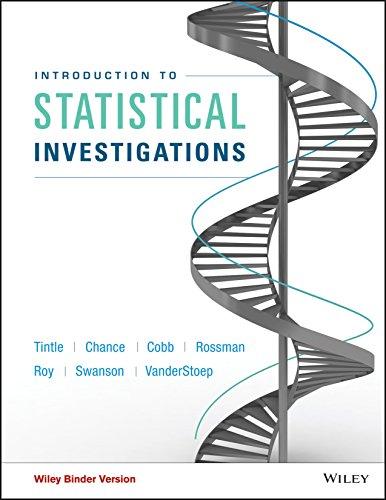In this exercise, as in the one before, we eliminate elections with more than two major party
Question:
In this exercise, as in the one before, we eliminate elections with more than two major party candidates as well as elections with two candidates of the same height. In addition, we eliminate the two elections in which George Washington was unopposed and fi ve elections with missing data. Consider four diff erent data sets:
A. Elections from 1960 (Kennedy) to the present: n = 14, p̂ = 8/14 = 0.5714.
B. Elections from Th eodore Roosevelt (1904) to the present: n = 25, p̂ = 19/25 = 0.76.
C. Elections from John Adams (1796) through William McKinley (1900): n = 16, p̂ = 5/16 = 0.3125.
D. Elections from John Adams (1796) to the present: n = 41, p̂ = 24/41 = 0.5854.
a. The four p-values, from smallest to largest, are 0.007, 0.174, 0.395, 0.961. Match each data set (A–D) with its p-value.
b. What do you conclude about the hypothesis that taller candidates are more likely to win?
Step by Step Answer:

Introduction To Statistical Investigations
ISBN: 9781118172148
1st Edition
Authors: Beth L.Chance, George W.Cobb, Allan J.Rossman Nathan Tintle, Todd Swanson Soma Roy





